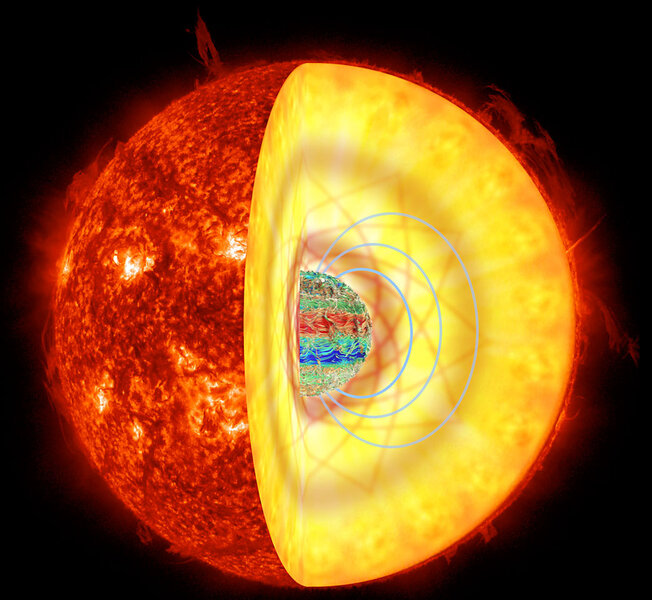What's inside red giants? Magnets, say astronomers
Loading...
The magnetic fields protecting stars' exteriors are well documented, but for the first time, researchers are peeking at what’s inside.
And they’ve discovered that these inner regions are also strongly magnetized, according to a study in the current issue of Science.
The research team, including scientists from the California Institute of Technology, University of California-Santa Barbara, and University of Sydney, used a technique called astroseismology to examine dozens of red giants – stars with origins similar to our sun that are in the last stages of their stellar lives.
"In the same way medical ultrasound uses sound waves to image the interior of the human body, astroseismology uses sound waves generated by turbulence on the surface of stars to probe their inner properties," Jim Fuller, the CalTech postdoctoral researcher who co-led the study, said in a statement.
This technique likely wouldn’t have worked on the sun or other "main-sequence stars," the team said, with their hydrogen-helium cores, but the carbon-oxygen cores of red giants are much denser than those of younger stars.
By examining stars' interior magnetic fields, scientists can better understand how stars rotate, evolve, and eventually die, say the researchers.
Fuller and his coauthors discovered what they call the "magnetic greenhouse effect," which occurs when gravity waves propagating through the star become trapped in its core due to strong magnetic forces. This mirrors what happens when greenhouse gases on Earth trap heat from the sun, the team says.
Trapping gravity waves inside a red giant changes the energy of the star's oscillation, the researchers said.
The resulting oscillation pattern – in this case, a dipole mode, where one hemisphere of the star grows brighter as the other becomes dimmer – then decreases in amplitude.
"It turns out the gravity waves that we see in the red giants do propagate all the way to the center of these stars," said co-lead author Matteo Cantiello, a specialist in stellar astrophysics from UC Santa Barbara's Kavli Institute for Theoretical Physics.
A 2013 NASA study using the Kepler space telescope detected the same lower-than-expected dipole pattern among red giants, and offered several theories as to why.
This new study supports one of those theories, say the researchers: the magnetic greenhouse effect.
The internal magnetic fields of red giants are as much as 10 million times stronger than Earth's magnetic field, the astronomers said.
"This is exciting, as internal magnetic fields play an important role for the evolution and ultimate fate of stars," said Sterl Phinney, CalTech's executive officer for astronomy and a professor of theoretical astrophysics, in a statement from the university.






